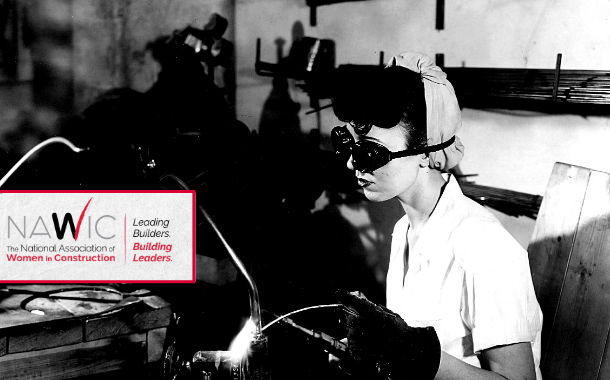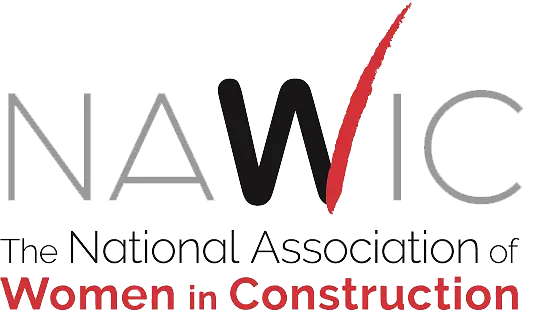Trailblazers: The first construction women to make an impact in their industry

Many construction women feel there is still a long way to go for equal rights and representation within the construction industry. However, the opportunities women have within the industry now would not be possible without the historic actions of the construction women who came before them. These women, from World War II welders to high society architects, helped to shape the industry through their passion for learning new trades and helped to speak for women who were voiceless in predominantly male fields.
The National Association for Women in Construction wouldn’t exist today without all of the sacrifices these women made. Here, we will highlight several women who showed leadership when expertise as construction women and within labor industries was unheard of.
Emily Roebling
Often noted as the “first woman field engineer,” Emily Roebling rose to prominence as one of the first documented construction women in the late 1800s. After her husband fell ill, Emily took over as a representative of his position of chief engineer to oversee the completion of the Brooklyn Bridge. Because Emily was one of the only people able to visit her husband while he was sick, she had to relay all correspondence to his team of assistants and builders. This gave Emily the opportunity to learn about strength of materials, stress analysis tests, cable constructions, and much more. Upon the bridge’s completion in 1883, Emily was the first person to cross the bridge. She was also honored at the opening ceremony for her devotion to the project and for being a leader for all women seeking higher education.
Cheryl McKissack Daniel
A modern day leader for construction women, Cheryl McKissack Daniel’s family business has made history as the oldest African-American-owned and female-run construction company in the United States. Crediting the origin of the business to a Tennessee slave, Cheryl can trace the business back more than two centuries. The business was then passed down generation by generation. Cheryl recalls walking through construction sites with her father as early as age ten, a cherished memory that fueled her and her sisters’ passion for becoming construction women and following in the family footsteps. When Cheryl’s father became ill in 1982, the business was so profitable that many investors wanted to take it over. But the women in the McKissack family knew they wanted to keep it in the family. In 2000, Cheryl took over and moved the business from Nashville to New York City where it continues to operate successfully as a multimillion dollar company. She hopes to continue inspiring the black community and construction women to join the industry through her work.
“Wendy-the-Welder”
Many recall the “Rosie the Riveter” campaigns of the 1940s, but there was another nickname for construction women during wartime as well – “Wendy-the-Welder.” Though not credited to one particular woman, these construction women were rather a group of courageous workers who had to endure harsh and sometimes deadly conditions to aid in the welding of ships. One woman, named Bethena Moore – who reportedly weighed only 110 pounds – was one of the workers responsible for climbing into the bowels of ships by scaling a narrow ladder attached to a welding machine in order to weld double bottoms on ships. She is quoted as saying, “It was dark, scary,” and going on to say, “You knew why you were doing it – the men overseas might not get back. There were lives involved. So the welding had to be perfect.” These construction women proved to many that women were not only just as capable as men to handle this intense work, but willing.
Elsie Eaves
A civil engineer leader, Elsie Eaves is still considered one of history’s most influential construction women. Elsie’s work was so revered that in 1927 she became the first woman to be inducted as a full member of the American Society of Civil Engineers. Throughout her career, Elsie managed projects and worked for the Colorado State Highway Department, the Denver and Rio Grande Railroad, and the US Bureau of Public Roads. Her most impactful accomplishment, however, involved creating databases prior to the invention of computers, where she used her skills to track and report on trends and spending within construction projects through data collection. Elsie’s innovative use of technical skills made her one of the first construction women to master new data advances within the industry.
How female construction workers can get even more construction related content through NAWIC
The National Association of Women in Construction now has over 117 local chapters across the United States, which makes it very easy for female builders to connect with our network of professionals. Membership is open to all construction women and NAWIC is able to provide members with amazing resources to help them gain confidence in their abilities and develop more leadership skills. Any female builders interested in becoming a NAWIC member can apply for membership by using either the online form or downloadable application to fill out and mail in – both of which are available on the NAWIC website. There are also several membership options available with flexible pricing and membership terms. To learn more about the female builders and powerful construction women involved in NAWIC or if you have any questions about membership, contact us through our social media pages.


